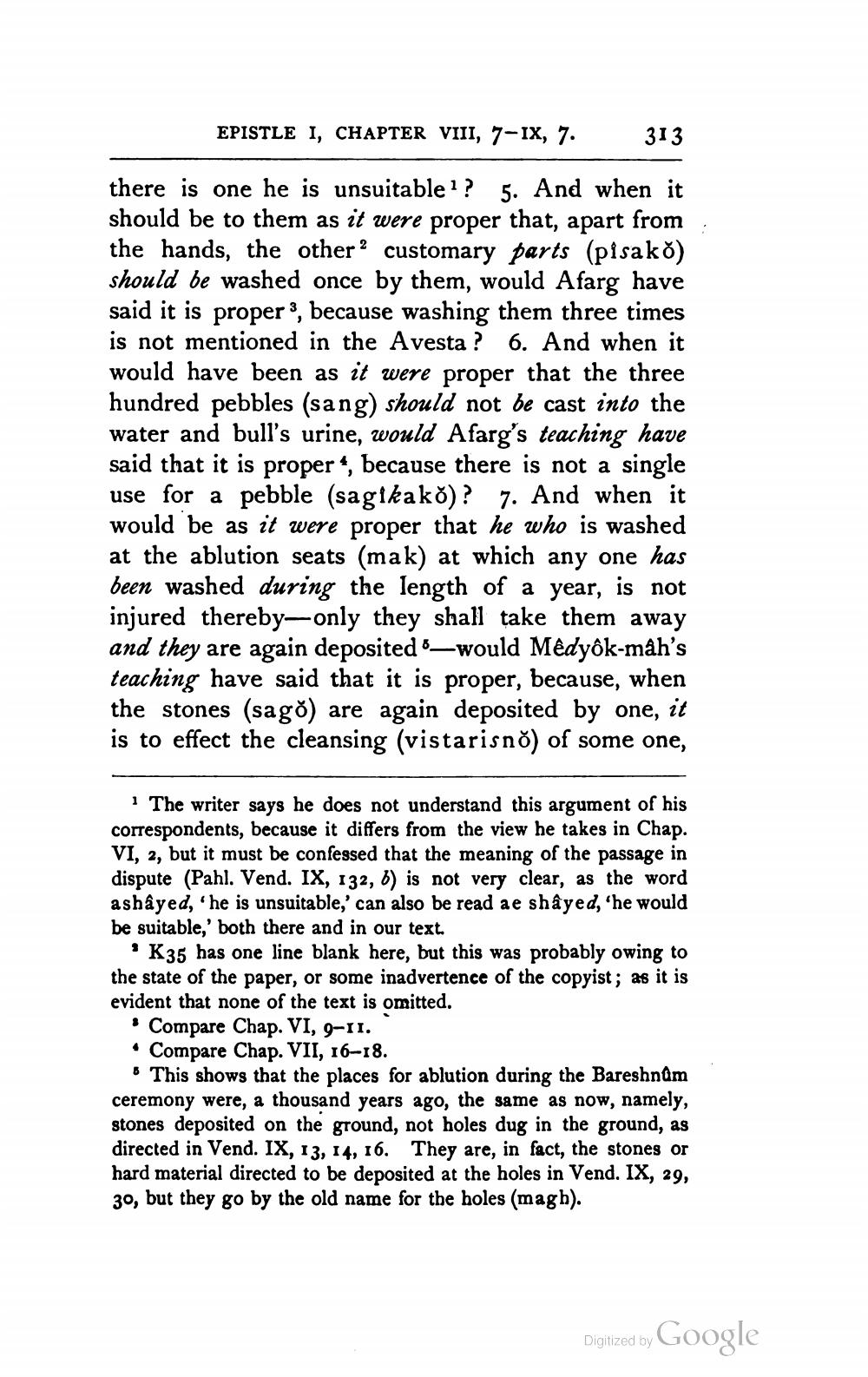________________
EPISTLE I, CHAPTER VIII, 7-1X, 7. 313 there is one he is unsuitable ? ? 5. And when it should be to them as it were proper that, apart from the hands, the other? customary parts (pisak) should be washed once by them, would Afarg have said it is proper 3, because washing them three times is not mentioned in the Avesta ? 6. And when it would have been as it were proper that the three hundred pebbles (sang) should not be cast into the water and bull's urine, would Afarg's teaching have said that it is proper“, because there is not a single use for a pebble (sagikako)? 7. And when it would be as it were proper that he who is washed at the ablution seats (mak) at which any one has been washed during the length of a year, is not injured thereby—only they shall take them away and they are again deposited 6—would Médyôk-måh's teaching have said that it is proper, because, when the stones (sagó) are again deposited by one, it is to effect the cleansing (vistarisno) of some one,
1 The writer says he does not understand this argument of his correspondents, because it differs from the view he takes in Chap. VI, 2, but it must be confessed that the meaning of the passage in dispute (Pahl. Vend. IX, 132, 6) is not very clear, as the word ashâyed, he is unsuitable,' can also be read ae shâyed, 'he would be suitable,' both there and in our text.
K35 has one line blank here, but this was probably owing to the state of the paper, or some inadvertence of the copyist; as it is evident that none of the text is omitted.
. Compare Chap. VI, 9-11. • Compare Chap. VII, 16-18.
• This shows that the places for ablution during the Bareshnam ceremony were, a thousand years ago, the same as now, namely, stones deposited on the ground, not holes dug in the ground, as directed in Vend. IX, 13, 14, 16. They are, in fact, the stones or hard material directed to be deposited at the holes in Vend. IX, 29, 30, but they go by the old name for the holes (magh).
Digitized by Google




